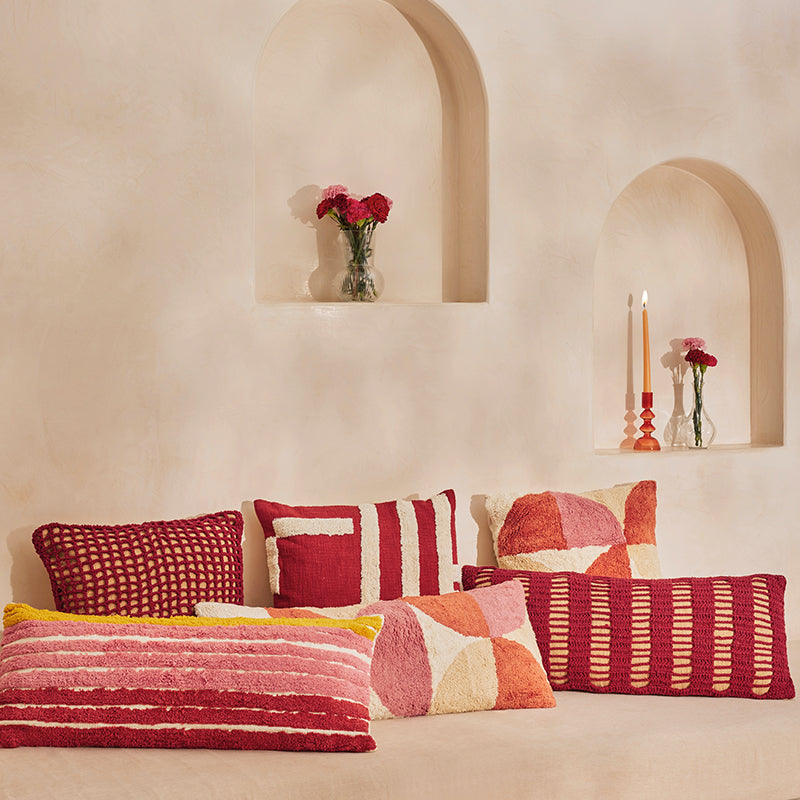
The Accent Wall Dilemma: Lighter or Darker? How to Choose the Right Shade for Your Space
Are you facing the age-old dilemma of choosing the right shade for your accent wall? The decision between going lighter or darker can be a tough one, as both options have their own unique advantages. It all comes down to understanding the impact of color on a space and how it can create the desired atmosphere. In this article, we will guide you through the process of selecting the perfect shade for your accent wall, ensuring that it not only complements your existing decor but also enhances the overall aesthetic of your space. We'll delve into the psychology of color, explore different color palettes, and provide expert tips to help you make an informed decision. So, whether you want to create a cozy and intimate atmosphere or make a bold statement, join us as we unravel the mystery of the accent wall dilemma and discover the perfect shade for your space.
What is an accent wall?
An accent wall is a wall that is painted or decorated in a different color or pattern than the surrounding walls in a room. It is a popular design choice that adds visual interest and depth to a space. The purpose of an accent wall is to create a focal point and draw attention to a specific area in a room. Whether it's the wall behind a fireplace, the wall behind a bed, or the wall in a dining area, an accent wall can transform the overall look and feel of a space.
When choosing the right shade for your accent wall, it's important to consider the overall theme and style of your space. A well-chosen accent wall can enhance the existing decor and create a cohesive and harmonious look. So, let's explore the impact of color on a space and understand how it can influence the atmosphere.
The impact of color on a space
Color has a powerful influence on our emotions and can significantly impact the mood and atmosphere of a space. Different colors evoke different feelings and can create a variety of effects. Lighter colors, such as whites, pastels, and neutrals, tend to make a room feel larger, brighter, and more open. They create a sense of calm and tranquility, making them ideal for spaces where relaxation is a priority, such as bedrooms and living rooms.
On the other hand, darker colors, such as deep blues, rich purples, and bold blacks, can create a sense of drama, intimacy, and coziness. They absorb light and make a space feel smaller, creating a more intimate and inviting atmosphere. Darker shades are often used in spaces where a sense of luxury and sophistication is desired, such as dining rooms and home offices.
Choosing between a lighter or darker accent wall
Now that we understand the impact of color on a space, let's dive into the decision-making process of choosing between a lighter or darker accent wall. Both options have their own advantages, and the right choice depends on the specific goals and preferences for your space. Here are some considerations to keep in mind when making this decision.
Considerations for choosing a lighter accent wall
A lighter accent wall can have a transformative effect on a space. It can brighten up a room, make it feel more spacious, and create an airy and refreshing atmosphere. Lighter shades work well in rooms with limited natural light or small spaces that need a boost of brightness. They also provide a neutral backdrop for showcasing artwork, furniture, and decorative accessories.
When choosing a lighter shade for your accent wall, consider the existing color palette in your space. Opt for a shade that complements the other walls and decor in the room. If your existing walls are already light, you may choose a slightly darker shade for the accent wall to create a subtle contrast. Alternatively, if your walls are already neutral, you can choose a pop of color for the accent wall to add visual interest and personality to the space.
Considerations for choosing a darker accent wall
A darker accent wall can add depth, drama, and a touch of elegance to a space. It creates a focal point that draws the eye and makes a bold statement. Darker shades work well in larger rooms with ample natural light, as they can create a cozy and intimate atmosphere. They also provide a contrast against lighter walls and can make a space feel more visually interesting and dynamic.
When choosing a darker shade for your accent wall, consider the overall mood and aesthetic you want to achieve. Dark blues and greens can create a calming and serene atmosphere, while deep purples and blacks can add a sense of luxury and sophistication. It's important to strike a balance between the accent wall and the surrounding walls and decor. Make sure the darker shade complements the other elements in the room and doesn't overpower the space.
How to determine the right shade for your space
Choosing the right shade for your accent wall can be a daunting task, but with a few simple steps, you can make an informed decision that will enhance the overall aesthetic of your space. Here's how to determine the right shade for your space:
1. Assess the natural light: Consider the amount of natural light your space receives throughout the day. If you have a room with ample natural light, you have more flexibility in choosing a darker shade. However, if your room lacks natural light, a lighter shade may be a better option to avoid making the space feel too dark and closed-in.
2. Consider the size of the room: Take into account the size of the room when choosing the shade for your accent wall. In smaller rooms, lighter shades can make the space feel more open and spacious. In larger rooms, darker shades can create a sense of intimacy and coziness.
3. Evaluate the existing decor: Look at the colors and patterns in your existing decor and select a shade that complements them. Consider the furniture, curtains, rugs, and artwork in the room. A well-coordinated color scheme will create a cohesive and harmonious look.
4. Test the shade: Before committing to a particular shade, it's important to test it in your space. Paint a small portion of the wall or use large swatches to see how the color looks in different lighting conditions. This will give you a better idea of how the shade will appear in your space.
By following these steps, you can narrow down your options and choose the perfect shade for your accent wall. Now, let's explore some accent wall ideas for different rooms to inspire your decision.
Accent wall ideas for different rooms
An accent wall can be incorporated into any room in your home, from the living room to the bedroom to the kitchen. Here are some accent wall ideas for different rooms to spark your creativity:
1. Living room: Create a focal point behind your television or fireplace with a darker accent wall. This will draw attention to the area and make it the center of attention. Choose a shade that complements your furniture and adds depth to the space.
2. Bedroom: Make a statement in your bedroom by painting the wall behind your bed with a bold and vibrant color. This will create a dramatic and luxurious atmosphere. Alternatively, opt for a softer shade to create a serene and calming environment.
3. Dining room: Add sophistication and elegance to your dining room with a dark accent wall. This will create a cozy and intimate atmosphere, perfect for hosting dinner parties. Pair it with a statement chandelier and a large mirror to enhance the visual impact.
4. Home office: Create a productive and inspiring workspace by choosing a vibrant color for your accent wall. This will energize the space and stimulate creativity. Consider using a shade that complements your desk and office accessories.
These are just a few ideas to get you started. The possibilities are endless, and you can customize your accent wall to suit your personal style and preferences. Now, let's explore different paint options and finishes for your accent wall.
Accent wall paint options and finishes
When it comes to painting your accent wall, there are various paint options and finishes to choose from. The right choice depends on the desired look and feel of your space. Here are some popular options:
1. Matte finish: A matte finish offers a smooth and velvety appearance. It provides a subtle and elegant look, making it suitable for both lighter and darker shades. Matte finishes are great for accent walls in bedrooms and living rooms, as they create a soft and cozy atmosphere.
2. Satin finish: A satin finish has a slight sheen, offering a subtle glow to the wall. It provides a sophisticated and polished look, making it suitable for accent walls in dining rooms and home offices. Satin finishes are also more durable and easier to clean, making them a practical choice for high-traffic areas.
3. Metallic finish: A metallic finish adds a touch of glamour and luxury to an accent wall. It creates a shimmering effect that catches the light and adds visual interest to the space. Metallic finishes work well in modern and contemporary spaces, adding a bold and dramatic element.
4. Textured finish: A textured finish adds depth and dimension to an accent wall. It creates a tactile and visually interesting surface that adds character to the room. Textured finishes are great for accent walls in eclectic and bohemian-inspired spaces.
Consider the overall style and theme of your space when choosing the paint option and finish for your accent wall. Experiment with different samples to see which one best complements your existing decor.
Accent wall design tips and tricks
To ensure that your accent wall looks cohesive and visually appealing, here are some design tips and tricks to keep in mind:
1. Balance the color: The accent wall should complement the other walls and decor in the room. Ensure that the color doesn't overpower the space or clash with the existing color scheme. Use color swatches and samples to find the perfect balance.
2. Create a focal point: Use your accent wall to create a focal point in the room. This can be achieved through the use of artwork, mirrors, or statement furniture. Draw attention to the accent wall and make it the center of attention.
3. Consider the ceiling: Don't forget about the ceiling when designing your accent wall. Consider extending the accent color onto the ceiling or using a complementary shade to create a cohesive look.
4. Use patterns and textures: Experiment with patterns and textures to add visual interest to your accent wall. Consider wallpaper, stencils, or textured paint for a unique and personalized touch.
By following these design tips and tricks, you can create an accent wall that adds depth, personality, and visual interest to your space.
Conclusion
Choosing the right shade for your accent wall can transform the look and feel of your space. Whether you opt for a lighter shade to create a bright and airy atmosphere or a darker shade to add drama and intimacy, understanding the impact of color on a space is key. Consider the natural light, the size of the room, and the existing decor when making your decision. Test different shades and finishes to find the perfect match. Remember to balance the color, create a focal point, and use patterns and textures to enhance the overall aesthetic. With these expert tips and tricks, you'll be able to choose the right shade for your accent wall and create a space that is both visually appealing and reflective of your personal style. So, embrace the accent wall dilemma and let your creativity shine!





